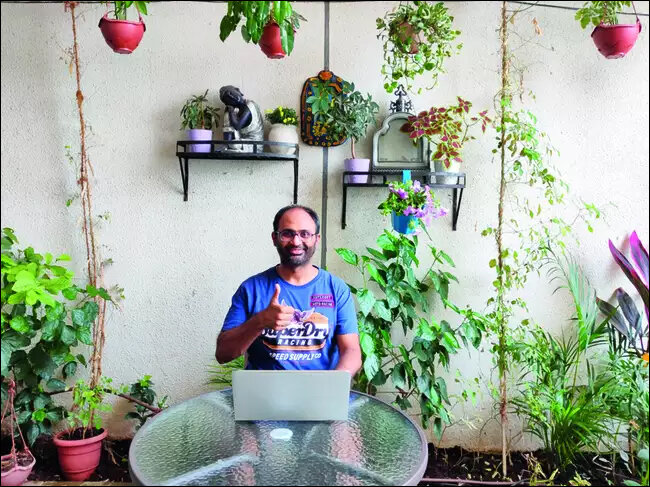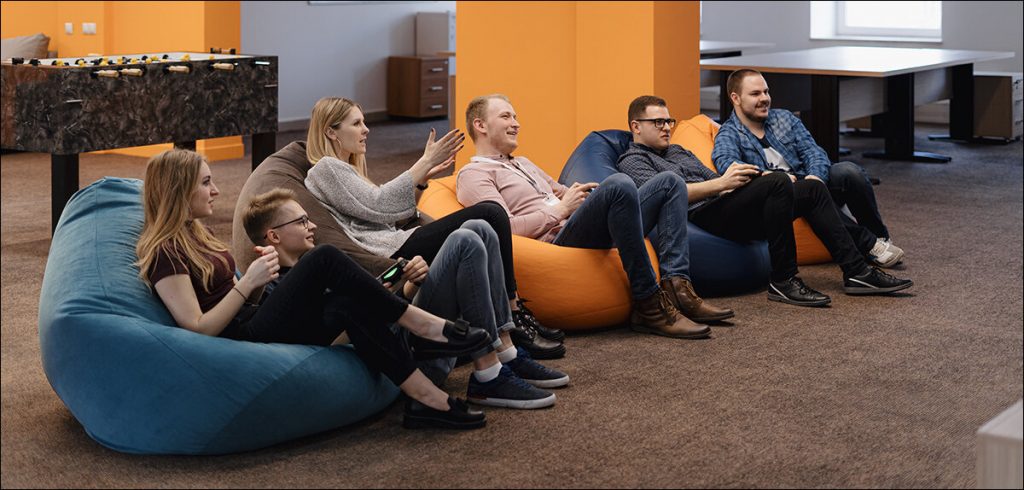In a world where WFH and hybrid models are preferred, Adarsh explores how corporates are trying to bring employees back to the office….
Teena wasn’t very excited when Covid-19 protocol meant she would have to work from home in 2020. But fast forward four years, she is settled into a life of working from the comforts of home. She dreads the day she will have to go back to office.
Raghav and Ira struggled to find time for each other because of their contrasting work schedules. But ever since they switched to a hybrid mode of working, they balance life and work effortlessly. They even take holidays together, working from remote destinations while spending time with each other.
For Deepika, who is a single mother of two, remote working was a godsend. She now manages a full-time job while also being a full-time mother. She doesn’t need to hire a nanny and worry about yet another bill as she can be around her kids while also keep a well-paying job.
Covid-19 may be done and dusted but there are some long-term positive implications as well. And one of them is WFH (work from home)!

What is Office Peacocking
Offices and managers however are not very happy about the arrangement. Remote working is advantageous to them in certain ways like cost cutting and smaller office spaces but it also takes a toll on productivity. Making the return to office a compulsion is not an option either as that would result in several employees moving to other companies who offer wfh as a perk.
Which brings us to Office Peacocking, the latest trend that corporates are resorting to in a bid to bring employees back to work….
Office peacocking involves transforming the traditional workspace into plush environments to encourage the staff to spend more time on-site. This revamp involves the addition of stylish decor, stocking up the kitchen and bringing in ergonomic furniture. Adding vibrant plants and natural light go a long way in making the office look appealing and companies believe that this is a good way to draw people back to work.

What the Data Says
Going by what employees have to say, though, it doesn’t look like even this might work. Forbes conducted a survey recently and it more or less suggests that most people are completely sold on the wfh model.
According to the survey, 90% of the people feel they are more productive in a hybrid or remote working setup. It’s not just the employees, even 79% of the employees believe that their team is more productive when working remotely.
Around 42% of the people claim that if the remote working option is removed, they would rather look for another job with more flexibility. 62% are even willing to take a 10% pay cut to keep a job that has a remote working option.
The Urgency for Office Peacocking
There are several recent trends that highlight the reasons why companies are doing their best to bring people back to work. Talking to Forbes, Frank Weishaupt, CEO of Owl Labs, shed some light on the polyworking trend which has caught on in the last few years.
Working from the comforts of their homes has allowed people to have more than one job. According to Weishaupt, more than half the employees in most companies have a ‘side hustle’ – a second job that adds to their income. He adds that almost 68% of these people who engage in polyworking do so while having full-time jobs.

The Advantages of Office Peacocking
Coming to office has many advantages that remote working just cannot provide. It fosters creativity as ideation sessions in person are a lot more fruitful than the ones conducted with the participants staring into screens.
Similarly, meetings and networking become easier. One can always spot a coworker in office and walk up to them in person and have a quick work-related conversation as opposed to checking their calendar to try and find a common timeslot where all parties are available. In case of remote working, a simple 5-minute conversation can sometimes get delayed by days or in some cases weeks.
Meeting in person also helps build bonds outside of work. Once you get to know your coworkers better, working with them becomes easier. Several employees who’ve joined companies post Covid have never met their colleagues and this can create an invisible barrier when it comes to work.
The Negative Impact caused by Office Peacocking
But at the same time, there are several negatives to companies trying to bring back employees to work. New employees can feel pressurized into coming into work as they feel this might lead to better visibility and chances of a promotion. There is also the concern of burnout and fatigue caused by commuting to and from work.
Weishaupt adds that this compulsion to be seen in office has led to the ‘coffee badging’ trend where employees come in to work only to make sure they are seen in office. Not necessarily there to complete tasks, they show up in office on certain days to create an impression that they are actively engaging in work on-site. In truth, they are there for a few hours only to take frequent coffee and cigarette breaks, while away time and wait until it is a reasonable hour to leave office. They achieve far less while being present on-site than they would have if they had worked from home.

The Last Word
Considering all these reasons, it is understandable why companies want their employees on-site. The only question is how!
According to Weishaupt, among all the things that would convince the staff to return to office, top of the list is the company covering their commuting costs. 38% would be enticed into coming to work if the cost is taken care of. Second on the list is more privacy at work followed by the assurance that all their key stakeholders would also be present in office at the same time. Relaxing the dress code can also bring people back as they don’t want to give up the luxury of wearing comfortable clothing like they do when they work from home.
Long story short, four years after Covid-19, companies still face an uphill task in bringing the workforce back to work. There are several ways to do it. Having a pretty office might just be one of them.
In case you missed:
- 5 Free AI Assistants To Make Your Life Easier
- WhatsApp adds New Document Scanning Feature
- 7 Online Scams to be Wary of in India
- Meta’s Puffin Project: Future of Mixed Reality in a Pair of Glasses
- Apple Intelligence to increase Global Reach with Multilingual Support
- 15 Billion Transactions a Month! How UPI is transforming India’s Digital Economy
- AI and Loneliness: Culprit or Cure?
- Is Tesla set to Launch Self-Driving Taxis in 2025?
- India rises to 2nd Place in Global Smartphone Sales, 3rd in Market Value
- Talk to ChatGPT with new AI Glasses









